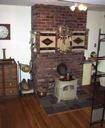|
Oney on professional service than create a fire hazard that may cost you thousands of dollars or even result in the destruction of your home! Content permission and free insurance content feeds For permission click here Are you a reporter searching for insurance-related information? Click here for help "Sixty-seven percent of households have a disaster-preparedness kit, according to the Insurance Research Council." For more statistics on disaster preparedness click here. Facts and Stats:AnnuitiesAuto InsuranceCatastrophesCommercial LinesDisabilityEarthquakesEconomic Contributions of InsuranceFinancial ServicesFlood InsuranceFraudHealth InsuranceHighway SafetyHomeowners InsuranceHurricanesIdentity TheftIndustry OverviewLife InsuranceLitigiousnessLong Term Care InsuranceProperty Casualty Insurance CycleRecreationRetirementTerrorismTornadoesWildland FiresWorkplace Safety Workers Comp LIFE INSURANCE RATES FALLING: I.I.I. expects decline of 4 percent in 2007. I.I.I. EN ESPA�OL � P
pipe stove wood Tandards developed in cooperation with the Fireplace Institute pipe stove wood, the Wood Energy Institute and the National Fire Protection Association. Other safety suggestions are: Read the instructions provided by the manufacturer for proper installation and follow them exactly. Allow a clearance of at least 36" on all sides of the stove to prevent scorching or possible fire. This distance can be reduced by installing approved radiation shields. Such shields should be placed under the stove on all surfaces except concrete. Keep as much of the pipe as possible inside the house to retain heat. The pipe should be well insulated where it passes through a wall or roof. The Wood Heating Alliance recommends using stove pipe-not galvanized steel ducts-to vent the stove to a chimney. To vent the stove into an existing chimney pipe stove wood, the chimney should be clean pipe stove wood, in good repair pipe stove wood, of heavy material and large enough to handle the pipe. Furnace chimneys may not be heavy enough pipe stove wood, but fire place chimneys usually are. If a pipe stove wood.
pipe stove wood Blished to reduce the problem. A chimney must extend at least 3 feet above a flat roof and at least 2 feet above a roof ridge or any raised part of a roof within 10 feet. Sometimes getting enough vertical clearance to prevent eddy currents from affecting chimney draft is impossible. This may be because of unusual heights of nearby trees. A hood or chimney cap can sometimes be used to prevent eddies from interfering with draft. Caps and hoods also minimize rain entry into the chimney during periods of non-use. Flue The opening in the chimney through which smoke passes is called the flue. To provide adequate room for smoke passage and draft development pipe stove wood, flues must be carefully sized in relation to stove capacity and chimney height. In general pipe stove wood, flue size should be 25 percent larger than the size of the stove pipe pipe stove wood, which connects the stove to the chimney. This means a stove with a 6-inch diameter pipe would require at least an 8-inch flue; an 8-inch stove pipe requires a 10-inch flue pipe stove wood, etc..
pipe stove wood . 24 guage pipe stove wood, painted with black high temp paint. Straight Pipe Sections 6" x 1' length $10 6" x 2' length $14 6" slip connector $18 7" x 1' length $10 7" x 2' length $14 7" slip connector $18 8" x 1' length $10 8" x 2' length $14 8" slip connector $18 Elbow pipe stove wood, Adjustable 6" Elbow $ 9 7" Elbow $10 8" Elbow $11 Tee Section Use instead of an elbow when connecting vertical pipe to a rear vent wood stove. Includes tee cap 6" $30 7" $35 8" $40 Increasors & Reducers Increasor is crimped on small end; Reducer is crimped on large end 6"-7" Increasor $20 7"-8" Increasor $20 6"-8" Increasor $20 8"-6" Reducer $20 8"-7" Reducer $20 7"-6" Reducer $20 Trim Collar 6" $6 7" $6 8" $6 Self Tapping Pipe Screws Use 3 screws at each pipe joint. 18 screws per pack $2 Tech Support: Black Pipe Installation Put 3 screws into each pipe joint. This helps prevent th.
pipe stove wood 
pipe stove wood | | | | | |
pipe stove wood
Y are heavy, take care not to strain yourself or drop them on your foot. 9. You can burn wood in a coal stove, but you shouldn't burn coal in a wood stove unless it is lined and designed for it. When you add coal to an approved stove, keep the stove pipe damper open until the fuel is burning well to avoid a potentially explosive buildup of gases from the coal. Heavily laden coal buckets can also cause strains and other mishaps if they are not handled properly. 10. Take down the stove pipe at least once or twice during the heating season and clean out the soot. Removing the accumulated soot saves fuel, increases heat and minimizes the danger of fire. 11. If you have yet to equip your house with fire warning devices, be sure to do so when you install a stove. Install a smoke detector in an adjacent room to avoid false alarms when you recharge the stove or from backpuffing due to wind. 12. Before opening the fire box to add fuel or just to look at the fire, always open the stove pipe damp
|

